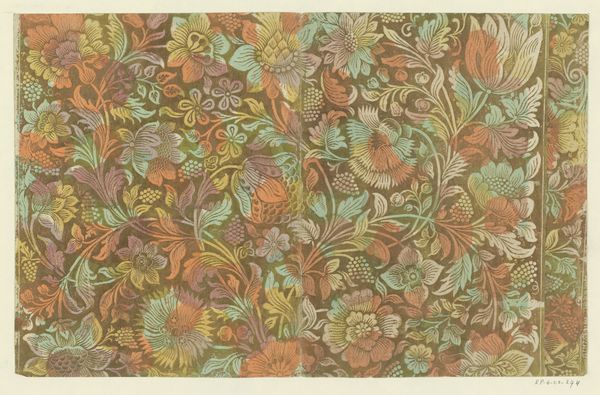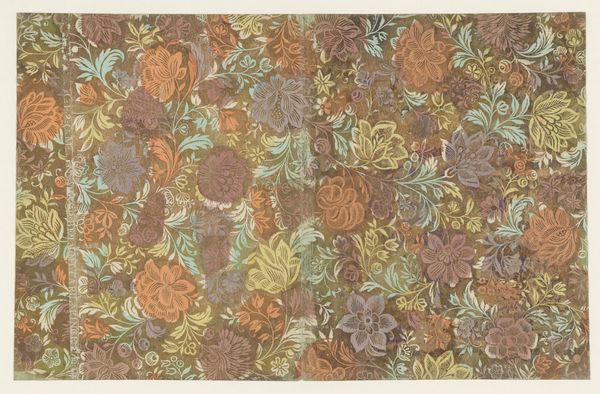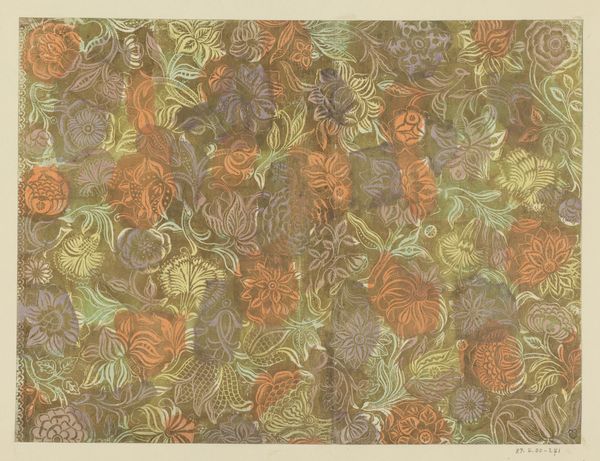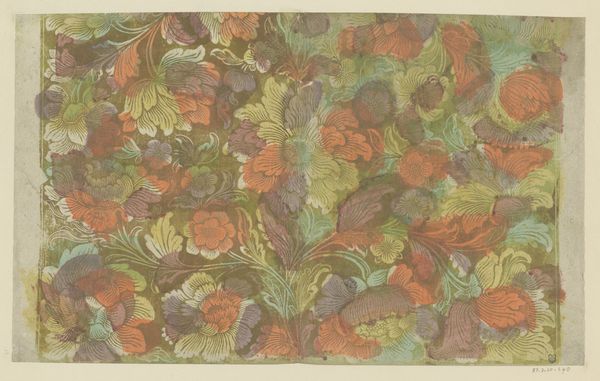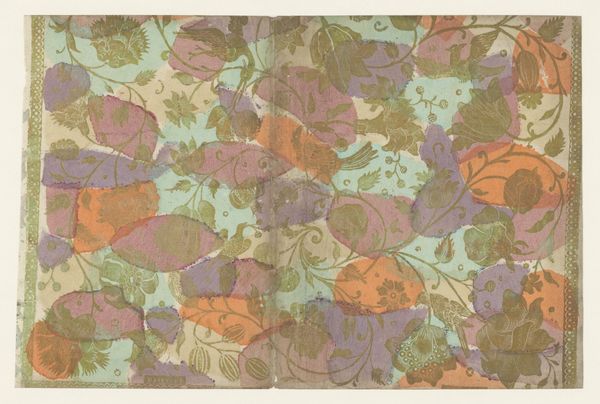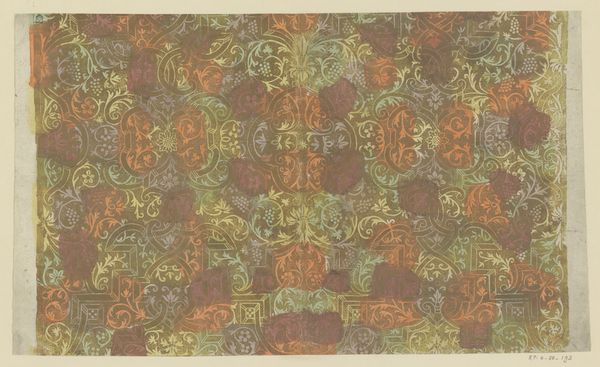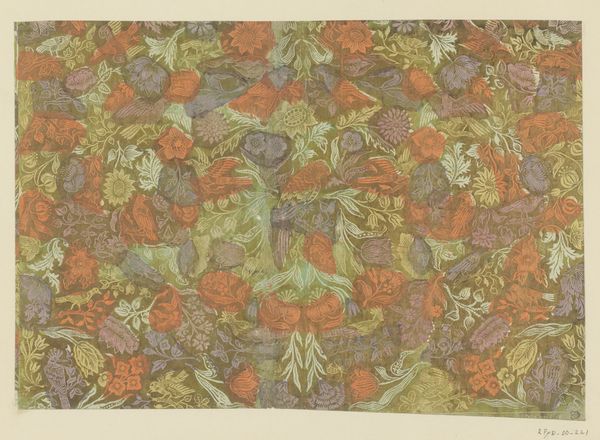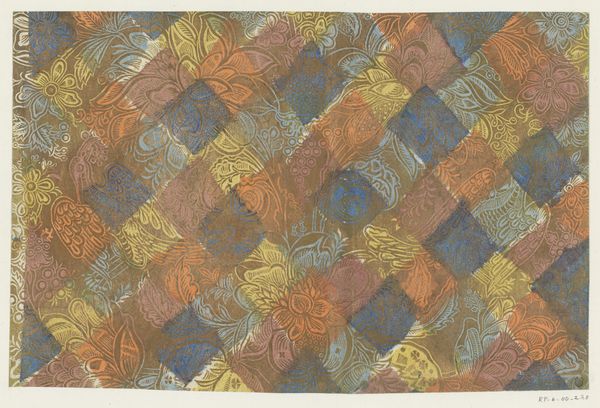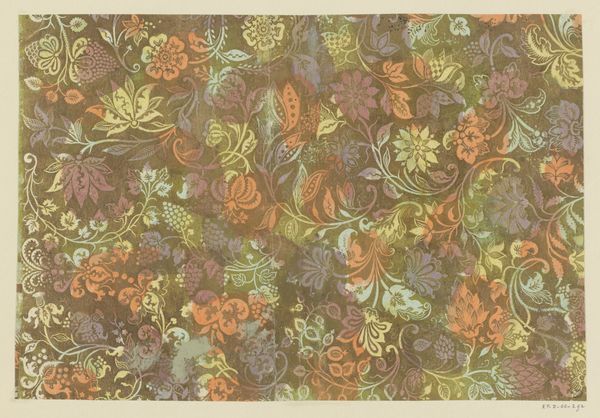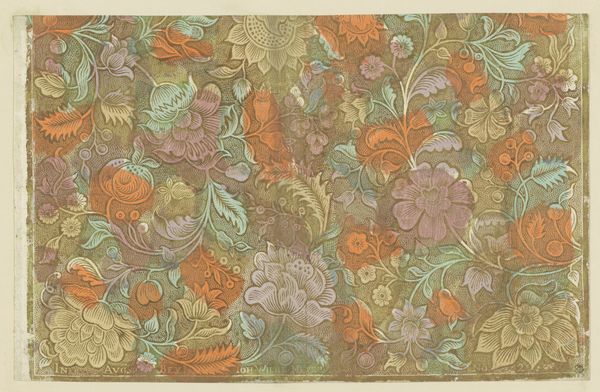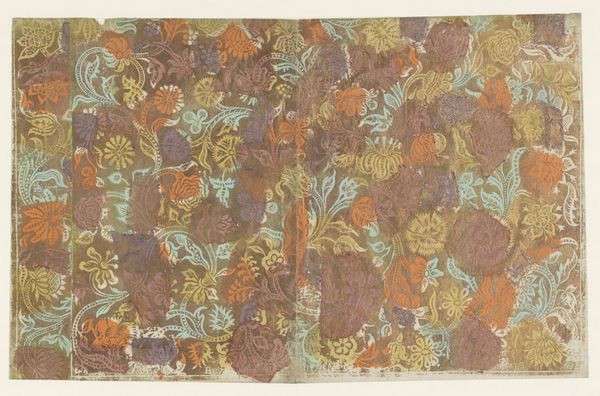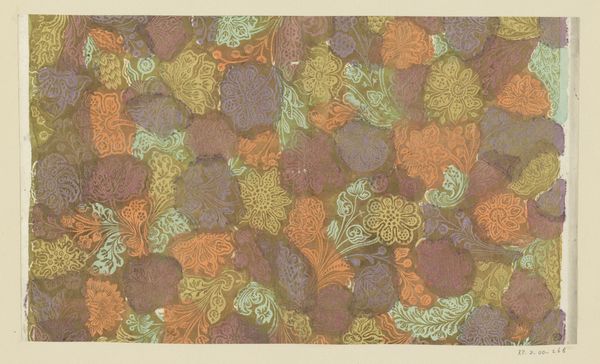
drawing, print, etching, paper
#
drawing
# print
#
etching
#
paper
#
11_renaissance
#
organic pattern
#
flower pattern
#
decorative-art
Dimensions: height 150 mm, width 170 mm
Copyright: Rijks Museum: Open Domain
Curator: Looking at these floral prints, I find them initially quite chaotic, but with a rather appealing palette of muted, earthy tones mixed with surprising splashes of blue. Editor: Indeed! The patterns are densely packed. We’re looking at a work titled “Twee bladen met bloemen en vruchten met puntenfond,” created by Johann Wilhelm Meyer between 1740 and 1780. It’s an etching, a type of printmaking. Curator: The dots... the 'puntenfond' give such a wonderful texture to the print. The density certainly reminds us of the increasing availability and fashion for printed textiles in that era. These designs were likely intended to inspire artisans, perhaps as patterns for wallpaper or fabric. Editor: I’m more intrigued by the almost disorienting arrangement of floral and fruit motifs. Meyer layers forms, obscuring and revealing elements beneath others. It creates this wonderful depth. The colours contribute to the illusion, playing with light and shadow even though they are mostly opaque. Curator: Precisely. Remember, pattern books like this one played a crucial role. They circulated knowledge and stylistic preferences across geographical boundaries, democratizing access to design at a time when art production was largely dominated by elite circles. These weren’t artworks meant to be displayed in galleries but rather to have tangible application within workshops. Editor: While recognizing that practical context, I think we also can appreciate the pure artistry here. Look at the delicate, intricate lines that make up each flower petal. The variations in hatching create tonal shifts and imply three-dimensionality, it is quite remarkable. Curator: Absolutely. And by understanding its function within the artistic ecosystem, we gain richer appreciation for how design permeated into the domestic spaces of that period and continues today. Editor: I find myself drawn to the dynamic rhythm that results from the patterned layering of it all; the overlapping adds to the visual complexity of its arrangement, as much an aesthetic statement as functional document. Curator: Ultimately, these floral patterns serve as both time capsules, illustrating trends and dissemination processes within the decorative arts. Editor: Yes, they prompt us to consider how artistic intent and commercial application intersected, shaping what we value even in the present day.
Comments
No comments
Be the first to comment and join the conversation on the ultimate creative platform.

